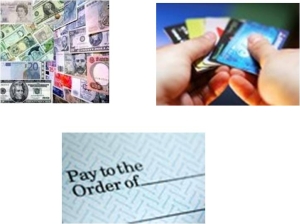
My stock trading account and the bank account to which it is linked are both held at the same bank which is a Top 3 private sector bank in India. Around five-six years ago, this bank changed all bank account numbers from 11 to 12 digits by adding a leading zero at the start of the old account number. Therefore, an old account number like 001 0400 8953 became 0001 0400 8953.
Whenever a security matures, National Securities Depository Limited (NSDL), which is India’s largest securities depository, sends the redemption amount via EFT to the customer’s stock trading linked bank account in its file. Since NSDL had used the old 11 digit account number in a redemption payment against one of my securities that had matured recently, it was evident that the bank hadn’t bothered to update it with the new account number despite several years after implementing the new numbering system. End result: One of the players in the payment chain – sending bank, central bank (RBI) or the receiving bank – rejected the payment with a message saying beneficiary account does not exist, and I didn’t get the money.
Although the receiving bank is clearly at fault for causing this problem, the onus was upon me to step in and request it to convey the new account number to NSDL. At least, was this process easy and fast? Hardly. It took me many visits to the bank’s Internet Banking portal, several emails, a couple of telephone calls and one letter sent by snail-mail. Some 30 days later and with no small help from NSDL which went the extra mile to help out despite not being the cause of this problem, the issue got resolved.
When this bank went ahead and changed all account numbers by itself, wasn’t it responsible for communicating the new account numbers to all involved parties (such as NSDL)? Why should NSDL and I have to go through the extra hassles to fix the problem caused by this bank?
Apart from raising such existential questions around governance and accountability, this experience (sadly) reinforces my long-held belief that e-payments still have too much friction to become viable alternatives to cash, checks and other traditional forms of B2C and C2C retail payments involving the common man.

By asking only for the payee name, checks drastically minimize the scope for errors and discrepancies. Whereas, by seeking far more information (beneficiary name, account number, bank name, branch name, IFSC code, etc.), e-payments introduce many more points of failure. As the average John Doe or Jane Doe brave it out and navigate this virtual landmine of e-payments, are they provided with customer-friendly signposts and assured of a certain level of fault resilience in the system? No. Instead, what they do come across are several one-sided and self-protective statements from the bank viz. “We are not responsible for incorrect account number”, “According to the regulator, credits are made solely on the basis of beneficiary account number and not name” and “Recovering money from unintended recipient’s account is beyond our control”.
As long as there is such a wide gulf between them in terms of ease of use and peace of mind, e-payments cannot be considered as substitutes for more traditional payment methods, notwithstanding their high tech veneer and low cost lure. With additional security measures being imposed on e-payments to mitigate against fraud (e.g. two factor authentication for mobile payments), something tells me that friction with e-payments is going to become worse before it becomes better.